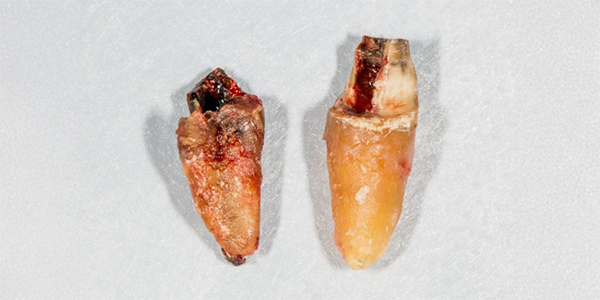The field of implant dentistry has seen tremendous advancements over the past few decades, with extraction and immediate implant placement becoming an increasingly popular treatment option. This approach not only saves time but also helps preserve bone volume and minimize soft tissue changes following tooth extraction. However, despite its advantages, immediate implant placement requires careful planning, precise surgical techniques, and thorough understanding of the patient’s clinical presentation to ensure success.
In this article, we will provide a comprehensive overview of extraction and immediate implant placement, focusing on the key considerations, advantages, potential complications, and best practices to help enhance the success of this treatment modality.
What Is Extraction and Immediate Implant Placement?
Extraction and immediate implant placement is a technique that combines the extraction of a non-restorable tooth with the immediate placement of a dental implant into the socket left behind. Traditionally, patients would need to wait several months after an extraction to allow for healing before an implant could be placed. Immediate placement, however, allows for the insertion of the implant in the same surgical session as the tooth extraction, with the goal of achieving both osseointegration of the implant and preservation of the surrounding hard and soft tissue structures.
This technique is appropriate for patients who have a tooth that needs to be extracted but who do not want to wait months for a conventional implant placement. The primary goal is to reduce treatment time, minimize bone resorption, and preserve the patient’s natural esthetics.
Key Advantages of Extraction and Immediate Implant Placement
- Preservation of Bone and Soft Tissues: One of the most significant benefits of immediate implant placement is the preservation of alveolar bone and soft tissues. After a tooth extraction, bone resorption typically occurs over time due to the lack of stimulation in the socket. Immediate placement helps to preserve the dimensions of the socket, reducing the need for additional procedures like bone grafting or sinus lifts.
Additionally, preserving the soft tissue contours around the implant site helps prevent the loss of gum architecture, which is particularly important in the esthetic zone.
- Reduction in Treatment Time: Immediate implant placement eliminates the need for multiple procedures and waiting periods, reducing the overall treatment timeline. Typically, a conventional extraction and implant placement require a healing period of several months, but with immediate placement, the patient can move more quickly to the restorative phase.
- Enhanced Esthetic Outcomes: Immediate implant placement can often lead to better esthetic results, especially in the anterior region. By placing the implant immediately after extraction, the dentist is able to help maintain the natural contours of the gum tissue. This is particularly critical in the esthetic zone, where soft tissue recession could otherwise create a compromised cosmetic result.
- Improved Patient Satisfaction: Immediate implant placement allows patients to avoid the inconvenience and prolonged healing times associated with traditional treatments. This can significantly improve patient satisfaction by reducing the number of procedures and appointments required for full restoration.
Key Considerations Before Immediate Implant Placement
While there are many advantages to extraction and immediate implant placement, several factors must be considered before opting for this approach.
1. Patient Selection
Not every patient is a suitable candidate for immediate implant placement. A thorough evaluation of the patient’s overall health, bone quality, and the condition of the remaining tooth roots must be performed. Ideal candidates typically meet the following criteria:
- Non-infected teeth: If there is significant infection or inflammation in the tooth to be extracted, immediate implant placement may not be advisable.
- Sufficient bone volume: The patient must have enough buccal bone and bone width to accommodate the implant. If the bone is compromised or the tooth has been infected for an extended period, the socket may not be adequate for implant placement without additional grafting.
- Absence of systemic health issues: Patients with uncontrolled systemic conditions, such as diabetes or osteoporosis, may face a higher risk of complications and should be carefully evaluated.
2. Type of Extraction
The condition of the tooth to be extracted plays a critical role in determining whether immediate implant placement is viable. If the tooth has a long, straight root with minimal bone loss, immediate placement is generally easier and more predictable. However, teeth with fractured roots, severe decay, or infection may not be ideal candidates, as these conditions can lead to additional complications, such as compromised bone integrity or damage to surrounding structures.
Additionally, when dealing with root fractures, there may be risks of damaging the adjacent bone during extraction, which could compromise the success of the implant.
3. Implant Selection and Positioning
The choice of the implant type and its placement is essential to the long-term success of the procedure. Factors such as implant diameter, length, and platform design must be considered based on the available bone and the intended final restoration.
The implant should be placed in the ideal three-dimensional position — apicocoronally, mesiodistally, and buccolingually. It is crucial to ensure that the implant is positioned in a way that maximizes osseointegration and supports the esthetics of the final restoration, while maintaining sufficient bone volume.

Get full access to this article, many others published weekly, and a library of exclusive resources by becoming an ADI MEMBER today. Stay informed, expand your knowledge, and connect with leading professionals in dentistry.
Already a member? Login Now












